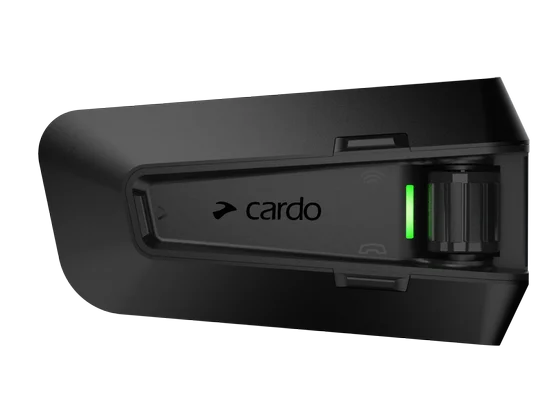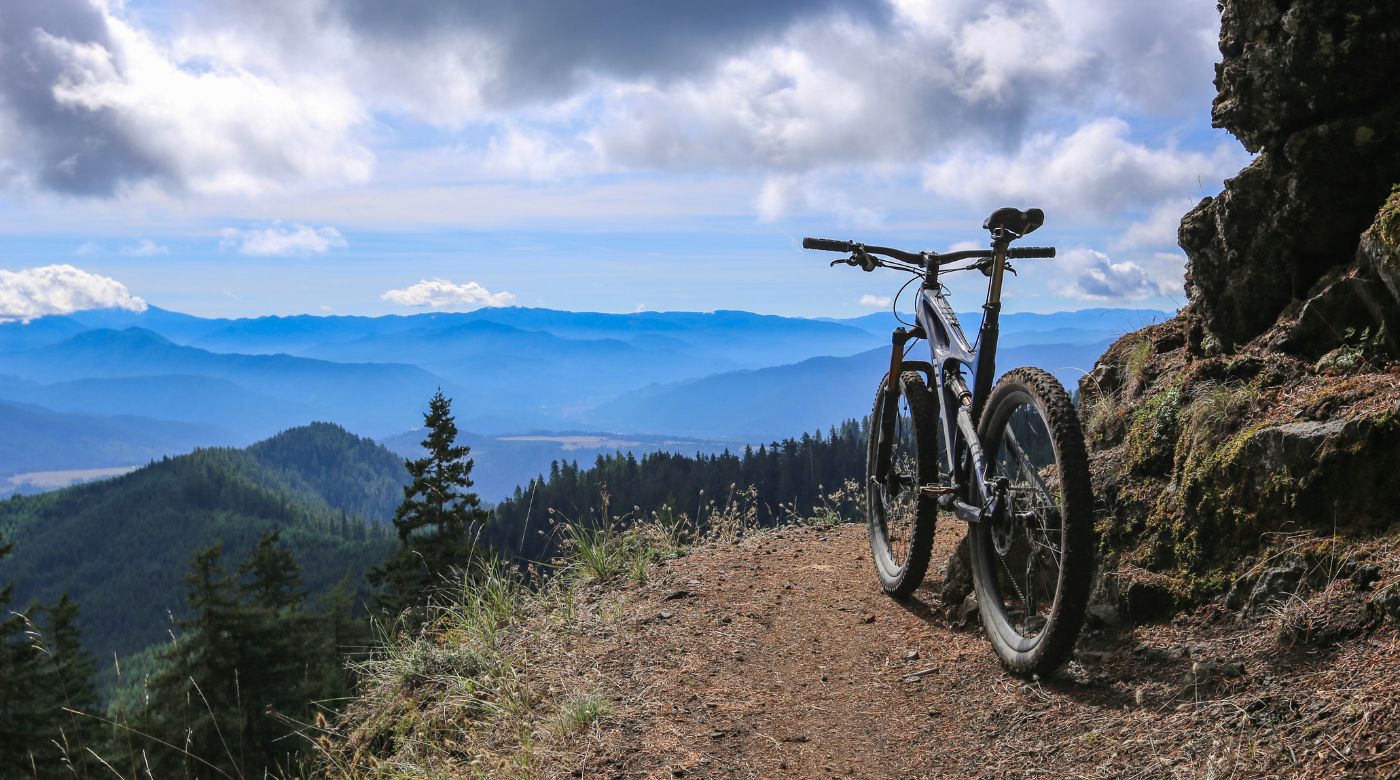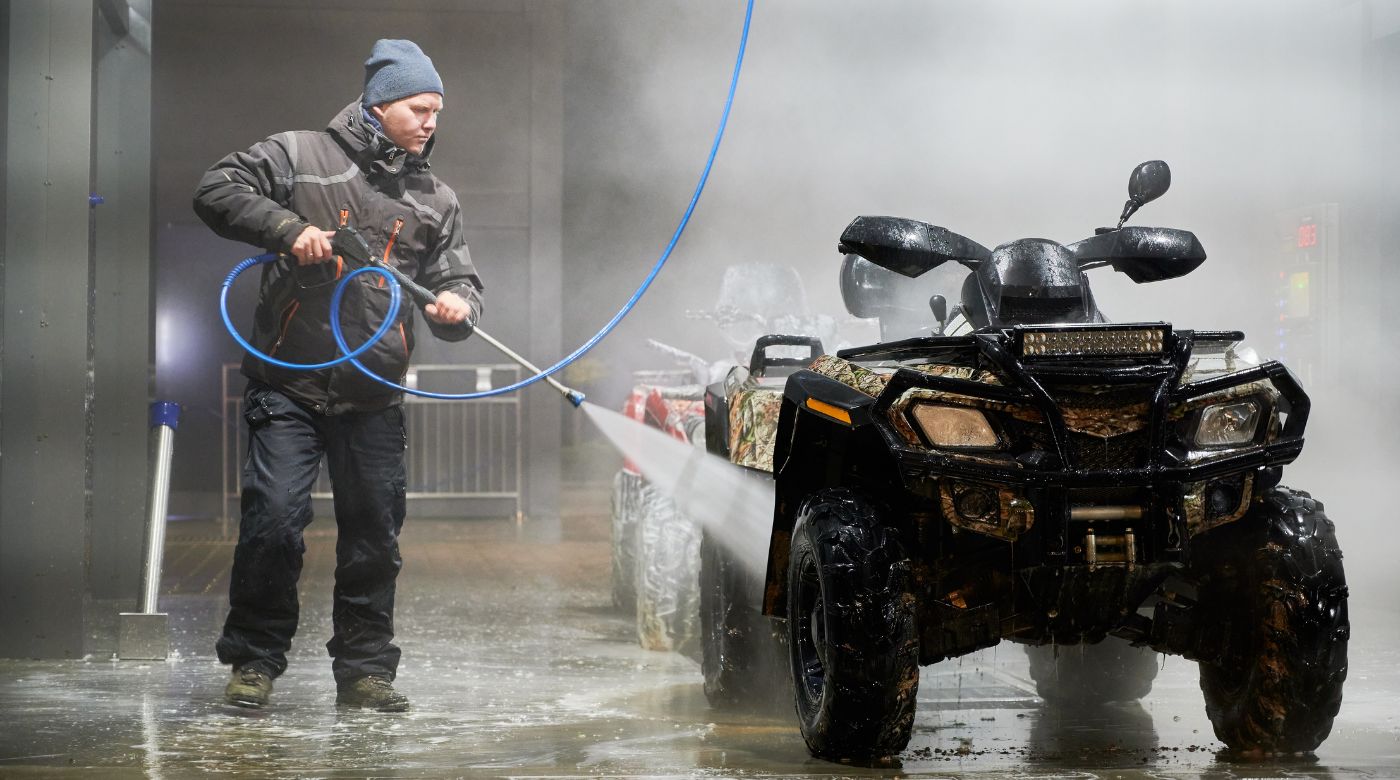If you’re just getting started riding a motorcycle, the bevy of motorcycle gear and helmet options can be intimidating to choose from — especially because you’re relying on your choice to save your life. It’s easy to choose a helmet that looks cool, but you already know that you need a lot more from your helmet. You need serious protection, but with versatile features that make it comfortable and practical to wear.
Let’s take a look at the most common types of motorcycle helmets available on the market today — plus a peek at the helmet communications systems from Cardo Systems that can turn your helmet into its own audio universe.
Full-Face Helmets
Full-face helmets are generally agreed to be the safest choice for road and highway riding. They offer full protection for all face and head areas, including a chin bar or chin strap and a fixed visor. The unibody design of a full-face helmet means that fogging and lack of ventilation can be a problem, so most full-face helmets are designed with ventilation and anti-fogging systems. Like most helmets, they are made with a carbon fiber, fiberglass or combination outer shell designed to withstand impact and protect the user from a head injury. Some materials may offer less protection than others, so it’s important for each rider to do research and choose based on factors ranging from riding experience to the weather conditions you expect to encounter.
Variations also exist within full-face helmet design. Helmets for sport bikes, for example, often have higher chin bars and up-angled visors to accommodate a forward-leaning rider, while cruiser and touring bike helmets are designed for a rider who sits up straight. Most full-face helmets also include movable cheek padding for comfort and stability.
Full-face motorcycle helmets offer the most protection and are considered the preferred choice when riding, especially when you are just starting out.
Flip-Up Helmets
Flip-up helmets include a hinged visor that allows the face shield to be raised up. These helmets are popular for their convenience, but they don’t quite offer the same level of protection as a full-face helmet because the hinge mechanism makes the chin bar slightly less durable. Nonetheless, motorcyclists can find many high-quality flip-up models today that will protect them well.
Open-Face/Three-Quarter Helmets/Modular Helmets
Most open-face helmets, or modular helmets, have no chin bar but include protection for the top, back and sides of the head, along with a face shield visor. These helmets offer solid protection for most of your head, although the lack of a chin strap does come with some risks, as the chin and jaw are among the most likely areas to be injured if you’re in an accident.
Half Helmets
A half helmet has neither a chin bar nor a visor – just a dome-shaped upper piece to cover your skull. Unsurprisingly, these offer the least protection of any motorcycle helmet, and they’re the bare minimum required in most states requiring motorcycle helmets. Their upside is vastly increased airflow (perhaps too much if you’re doing highway riding).
Protective eyewear is a must if you wear a half helmet. UV-polarized riding goggles with a backstrap are preferred, but anything is better than nothing. Riders who choose half helmets also often wear neck and face guards to keep bugs and dirt from flying into their mouths.
Off-Road Helmets
Off-road helmets are designed with motocross and ATV riders in mind. These helmets are typically lighter than full-face helmets to reduce fatigue and improve airflow – and they include more prominent chin bars.
Off-road helmets typically don’t include a face shield. Instead, off-road riders wear goggles and helmets to protect their eyes. For this reason, it’s important to make sure your off-road goggles fit with your helmet since not all styles may be compatible. Finding a matched set of goggles and a helmet designed to work together is ideal.
Dual Sport Helmets
Dual sport helmets are designed to bridge the gap between off-road and road helmets. They feature the lighter design and prominent chin bars of off-road helmets but with the extra padding and more heavyweight design of a full-face helmet. If you ride both off-road and street, a dual sport helmet might be a good option.
Additional Helmet Safety Features
Motorcycle helmets are constantly getting more advanced, adhering to stricter safety standards. Considering the risks that come with riding a motorcycle, riders want as much protection as possible when riding on the road. It is important to consider things like eye protection and helmet compatibility with accessories like Bluetooth motorcycle communication devices.
Some models will even project your route on the visor. You don’t have to look down at your device as often for a better view of the road. Some advanced helmets even come with mirrors and cameras for improved visibility. They let you see more of your surroundings to limit your chances of getting into an accident.
Helmet Safety Certifications
When choosing a motorcycle helmet, understanding the differences between DOT, Snell and ECE safety certifications can help riders make an informed decision. Each motorcycle helmet rating has its own set of standards and testing protocols, which can impact the level of protection offered by the helmet.
- DOT Certification: The legal minimum standard for motorcycle helmets in the U.S. Ensures basic safety through self-certification by helmet manufacturers. Helmets must meet the DOT standard to be legally sold in the U.S.
- Snell: Known for its rigorous testing standards, providing superior protection, especially in high-speed environments. Snell certification involves independent testing and is highly regarded for its thoroughness.
- ECE: A mandatory standard in over 50 countries, offering comprehensive and stringent helmet testing. ECE certification includes rigorous impact tests and safety ratings that ensure high levels of protection.
These certifications are designed to enhance safety gear for motorcyclists, reducing the risk of injury in the event of an accident. Helmets that meet these standards provide greater peace of mind for riders concerned about their safety.
Choosing the Best Motorcycle Helmet Style for Your Riding Needs
Now that you are familiar with the different types of motorcycle helmets, it’s time to find a helmet that suits your unique needs. Many of the helmets mentioned above will help you stay safe on the road, and wearing some kind of helmet is always better than wearing no helmet at all.
Consider the following factors when choosing a helmet:
Safety
Safety and maximum protection should be your number one concern when shopping for a helmet. Consider your experience level and how you plan on using the bike. Full-face helmets offer the most protection, but they tend to cost more than other types of helmets. If you only plan on traveling short distances, a full-face helmet may not be necessary.
Comfort and Fit
There’s no point in wearing a helmet unless it fits. We all have different head shapes, so make sure you have a chance to try on your helmet before hitting the road. Make sure the adjustable chin strap tightens to your liking. You should be able to breathe and turn your head easily and the helmet shouldn’t slide off when you lean over. A properly fitting helmet should protect your entire head effectively.
Aerodynamics
If you don’t want to compromise speed for safety, look for an aerodynamic helmet with vented openings on the sides to let air pass through, regardless of your riding position. These helmets often have sleek, smooth designs that naturally deflect the wind for minimum resistance when traveling at high speeds. This design helps reduce wind noise and provides maximum airflow around the rider's head. Choose a helmet that suits your riding style for optimal performance and comfort.
Choosing the Best Motorcycle Helmet Communications System
Full-face helmets go great with the styling of the Cardo Packtalk Edge. If your taste in helmets runs more toward the open-face or half helmet, check out our Cardo Packtalk Half Helmet Audio Kit, which includes a boom mic and mounting gear. Finally, a set of JBL motorcycle helmet speakers can bring your sound quality into a new dimension.
Take your time when shopping, find a helmet that feels great and meets the right criteria and take a look at the best-in-class technology of Cardo motorcycle helmet communicators when you need to stay wired on the road.
Shop All Motorcycle Helmet Communication Systems Here




